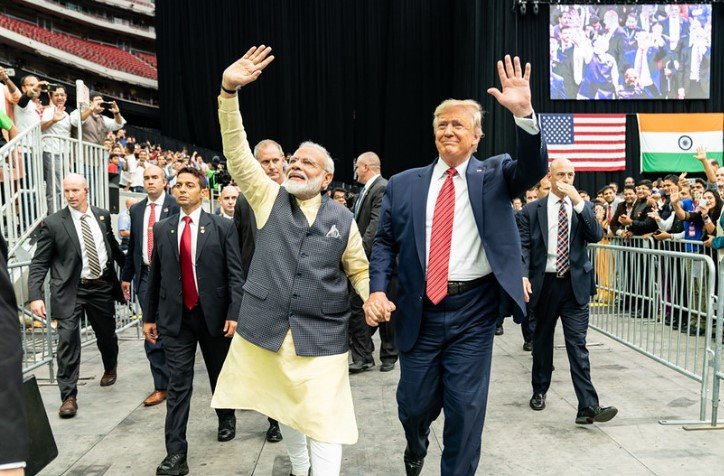Modi government sees early US trade talks as a strategic edge, avoids retaliation even as global backlash grows
India has chosen to step back instead of striking back.
Despite a hefty 26% tariff slapped on Indian goods by U.S. President Donald Trump, the Indian government has ruled out immediate countermeasures. Instead, officials in New Delhi are quietly betting that patience and diplomacy may offer better long-term leverage — particularly while its regional rivals face steeper challenges.
Playing the long game while others brace for impact
When Trump’s new tariff policy dropped, it sent shockwaves through global markets. China was quick to retaliate. The European Union isn’t far behind. But India?
A senior government official, speaking anonymously due to the sensitivity of ongoing negotiations, confirmed that no retaliatory tariffs are being considered — at least not for now.
Why? The answer is buried in the fine print of Trump’s order. According to the official, India is eyeing a clause that opens the door for exemptions — but only for countries that make moves to fix “non-reciprocal trade arrangements.” Translation? If you play nice, you might get a pass.

India’s early edge: trade talks already underway
Here’s what sets India apart. While other Asian exporters like Vietnam, China, and Indonesia are reeling from sudden tariff hikes, New Delhi already has something many don’t — an open line to Washington.
Another Indian government official told Reuters that India’s early engagement on trade negotiations may be its biggest advantage right now.
“We’re not in a rush to retaliate because we’re already sitting at the table,” the official said.
That diplomatic head start could mean India avoids the worst of the trade war. While others are reacting, India is quietly maneuvering.
What’s behind Trump’s tariff blitz?
Let’s not forget how we got here.
Trump’s administration has long pushed a “Buy American” message. But the latest tariffs — ranging from 25% to 30% — mark a significant escalation. They’re aimed at correcting what the U.S. sees as long-standing trade imbalances with several countries, particularly in Asia.
India got hit with a flat 26% tariff. And while that’s less than what China faced, it’s still painful. Especially for sectors like textiles, electronics, and auto parts — all major Indian exports.
But Trump also included a loophole — intentionally or not — that may end up being India’s exit route. The clause that rewards countries for fixing unfair trade terms offers wiggle room. India’s hoping that window stays open.
Others are already hitting back
India may be playing it cool. But globally, the mood is tense.
-
China wasted no time. It slapped tariffs on over $15 billion worth of U.S. imports — ranging from aircraft parts to soybeans.
-
The European Commission is reportedly preparing a similar move, targeting U.S. motorcycles, whiskey, and even digital services.
-
Indonesia and Taiwan, like India, have held off — possibly waiting to see how the U.S. handles “friendly” trade partners.
India’s choice to align with restraint over retaliation puts it in a smaller club, one that Washington might view more favorably in coming negotiations.
A calculated silence from the top
Interestingly, neither Prime Minister Narendra Modi nor Commerce Minister Piyush Goyal has made public remarks about the tariffs. That silence isn’t accidental.
Delhi is carefully managing optics. On one hand, the government doesn’t want to appear weak ahead of next year’s elections. On the other, it recognizes that a hasty move could jeopardize long-term trade goals.
Publicly, it’s business as usual. Privately? It’s all hands on deck.
What’s at stake for India?
Make no mistake — there’s a lot on the line.
| Sector | Export Value to US (2024 est.) | Tariff Impact |
|---|---|---|
| Textiles | $8.7 billion | High |
| Pharmaceuticals | $6.2 billion | Low (mostly exempt) |
| Electronics | $4.1 billion | Moderate |
| Auto Components | $2.5 billion | High |
Indian exporters are already feeling the chill. Especially in the auto and textile sectors, where margins are thin and global competition is brutal.
But there’s optimism too. Pharmaceutical exports remain largely untouched, and India’s IT services — its crown jewel — are unaffected by the new tariff policy.
A message to Washington, quietly delivered
Behind the scenes, Indian diplomats are pushing a clear message to the U.S.: we’re willing to talk, not fight. That approach may sound soft, but it’s strategic.
Trump’s second term has leaned heavily into protectionism, but the administration is also signaling interest in “friendly” partnerships. That’s where India is trying to fit in.
